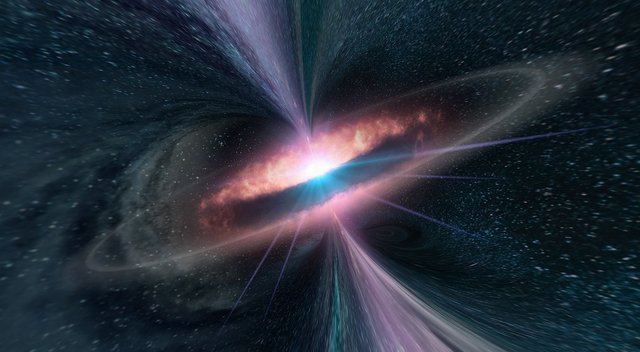Exploring the Mechanisms Behind the Intense Radiation Emitted by Supermassive Black Holes
Black holes are some of the most enigmatic and fascinating objects in the universe. Supermassive black holes (SMBHs) are the largest and most powerful of all black holes, with masses ranging from millions to billions of times that of the sun. Some of these SMBHs are known to emit intense radiation, making them some of the brightest objects in the universe. In this article, we will explore the mechanisms behind the intense radiation emitted by these supermassive black holes.
What are Supermassive Black Holes?
Supermassive black holes are believed to be present at the center of most, if not all, galaxies, including our own Milky Way. They are incredibly dense, with a mass of millions to billions of times that of the sun, packed into a region that is only a few times larger than our solar system. SMBHs are thought to form through the collapse of massive clouds of gas and dust, or through the merging of smaller black holes. They are also known to grow in size by accreting matter from their surrounding environments.
How do SMBHs Accrete Matter?
SMBHs can accrete matter from their surrounding environments through a process called accretion. This occurs when matter, such as gas and dust, falls into the gravitational well of the black hole and spirals inward. As the matter gets closer to the black hole, it heats up and emits radiation. This radiation can be observed by astronomers and provides valuable information about the properties of the SMBH and its surrounding environment.
There are two main types of accretion: quiescent accretion and active accretion. Quiescent accretion occurs when matter falls onto the black hole at a relatively low rate, and the emission from the accretion disk is relatively weak. Active accretion occurs when matter falls onto the black hole at a high rate, and the emission from the accretion disk is much stronger. It is this active accretion that leads to the intense radiation emitted by some SMBHs.
What Causes the Intense Radiation Emitted by Some SMBHs?
The intense radiation emitted by some SMBHs is thought to be caused by a combination of factors, including the properties of the accretion disk, the strength of the magnetic field, and the orientation of the disk relative to the observer.
Accretion disks are thought to be flat structures of gas and dust that surround the black hole. As matter falls onto the disk, it spirals inward, emitting radiation as it heats up. The radiation emitted by the accretion disk is typically in the form of X-rays and ultraviolet light, which are highly energetic forms of radiation. The properties of the accretion disk, such as its temperature and density, can influence the amount and type of radiation emitted.
The magnetic field around the SMBH can also play a role in the emission of radiation. Magnetic fields can cause matter to spiral inward more quickly, increasing the rate of accretion and the amount of radiation emitted. They can also cause matter to be ejected from the disk in powerful jets, which can emit radiation at a range of wavelengths.
Finally, the orientation of the accretion disk relative to the observer can also influence the amount of radiation emitted. If the disk is viewed edge-on, it can appear dimmer than if it is viewed face-on, as more of the radiation is absorbed by the disk itself.
Examples of Intensely Radiating SMBHs
There are several examples of SMBHs that emit intense radiation, including quasars, blazars, and Seyfert galaxies.
Quasars are some of the most luminous objects in the universe, emitting radiation across a broad range of wavelengths, from radio waves to X-rays. They
